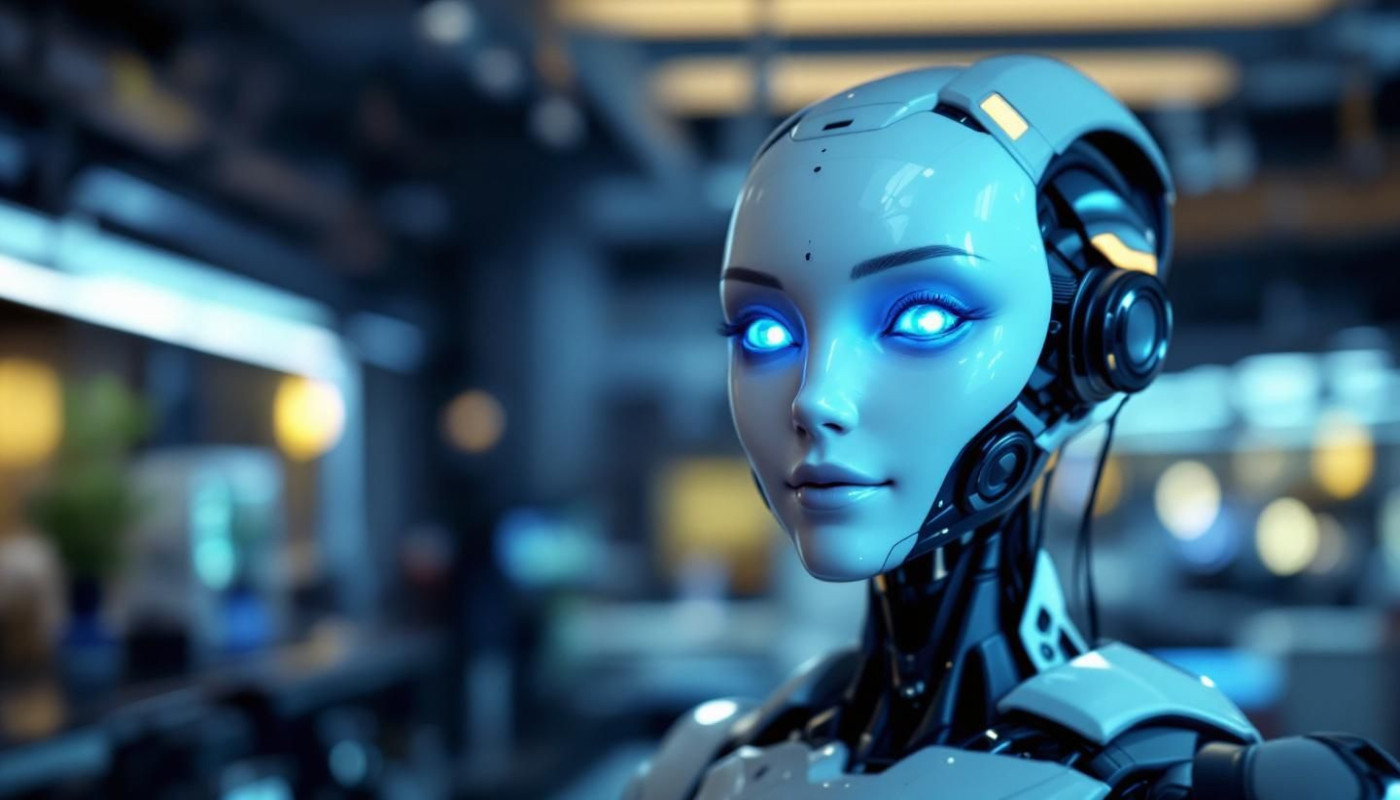Table of contents
The digital landscape is constantly evolving, ushering in waves of innovation that redefine user experiences. Among the most transformative developments in recent years has been the integration of advanced chatbots into web interactions. These sophisticated conversational agents open up a world of possibilities for enhancing engagement, providing support, and even driving conversions. As we stand on the cusp of this technological evolution, it is vital to understand the potential of these tools in shaping the future of online communication. This discussion delves into the myriad ways in which chatbots powered by generative pre-trained transformers are becoming the next frontier in web interaction. It beckons readers to explore the depth of this innovation, its implications for businesses and consumers alike, and how it is set to revolutionize the way we interact with the digital domain. Step into the future of web interaction and discover how these intelligent systems are not just a trend but a transformative force in the online world.
The transformative impact of chatbots on user experience
The advent of chatbots has significantly influenced user experience on websites, initiating a new era of instant support and personalized interaction. The rise of conversational user interface in the form of these chatbots allows for swift, effortless communication between brands and their users, providing a human-like interaction without the need for human intervention. This, in turn, has proven to be beneficial in numerous ways.
One prominent advantage is the presence of a virtual assistant that is readily available round the clock. This 24/7 support ensures that users' queries and concerns are addressed immediately, regardless of the time or day, eliminating the typical waiting time associated with traditional customer service. Consequently, this leads to an increase in customer satisfaction as users feel valued and heard, forging a robust relationship between them and the brand.
Also, the ability of chatbots to provide personalized interaction adds to the enhanced user experience. They are capable of remembering past interactions, understanding user preferences, and providing tailored services accordingly. This level of personalization makes users feel special and understood, further elevating the level of customer satisfaction. Thus, it's clear that chatbots are not just a trend, but a significant leap forward in improving user experience on the web.
Integrating Chatbots for Enhanced Customer Service
One of the pivotal advancements in digital customer service is the effective integration of chatbots. These sophisticated tools, empowered by natural language processing, are transforming how businesses handle customer inquiries and issue resolution. The ability of chatbots to understand and respond to user queries in a lifelike manner has revolutionized the sphere of customer service.
With the capacity to provide swift responses, chatbots substantially reduce response times, ensuring customer queries are handled promptly. This expedited response framework significantly enhances customer satisfaction, as consumers appreciate quick, accurate, and round-the-clock assistance. Moreover, chatbots have proven effective in swiftly resolving issues, an attribute that further cements their role in customer service.
In addition to their direct interaction with customers, chatbots play a vital role in optimizing human resources. By automating responses to routine inquiries, chatbots liberate human customer service representatives, allowing them to focus on complex tasks that require human intervention. By assuming the role of the first line of contact, chatbots have rendered customer service more efficient and effective, offering companies a viable avenue for resource optimization.
Driving business growth with chatbot analytics
Businesses today are rapidly recognizing the indispensable value of chatbot analytics in driving their growth. The data derived from chatbot interactions can provide a treasure trove of insights into customer behavior and preferences that were previously unattainable. This wealth of information serves as a powerful tool for businesses to refine their strategies, leading to significant improvements in their service delivery.
Understanding and analyzing customer interactions with chatbots allow businesses to make data-driven decisions, leading to a higher level of personalized customer service. By leveraging the insights obtained through chatbot analytics, businesses can align their products, services, and marketing efforts more effectively with the needs and desires of their customers.
Furthermore, the advent of machine learning technologies has given chatbots the capability to learn and adapt from each interaction. This leads to continual enhancement in chatbot performance, paving the way for a more sophisticated and intuitive user experience. In essence, the use of chatbot analytics to understand and predict customer behavior is not just an added advantage—it's becoming an essential aspect of successful business strategies and service improvement.
Overcoming the Challenges of Chatbot Implementation
In the realm of online customer interaction, chatbot implementation is an increasingly popular strategy. However, businesses may encounter several obstacles, such as integration complexities and issues with user acceptance. One such challenge is API integration. API integration involves the connection of different software applications to enable them to work together, a process that can be fraught with difficulty.
The integration complexities arise from the need to ensure that the chatbot can effectively communicate with the company's other software systems. This can be a detailed and painstaking process, requiring a deep understanding of both the chatbot's capabilities and the existing software environment.
Another significant challenge is user acceptance. Efficient chatbot implementation should not disturb or disorient the user experience, which makes the process of integrating a chatbot into a website or mobile app a delicate one. Ensuring that the chatbot is intuitive and user-friendly is imperative for its successful adoption.
Despite these hurdles, there are clear adoption solutions available. Businesses can mitigate integration complexities by investing in comprehensive planning, seeking expert advice, and prioritizing thorough testing. User acceptance can be improved by focusing on user experience and feedback, incorporating updates that respond to user needs, and ensuring that the bot is capable of meaningful and natural interaction.
Addressing these business challenges is central to successful chatbot deployment. By anticipating and effectively tackling these issues, businesses can fully leverage the benefits of chatbot implementation. The journey may be challenging, but with a well-thought-out strategy and careful execution, it is entirely possible to overcome these challenges.
If you're still unsure about implementing chatbots, dig this: With the right approach, they can revolutionize your customer interaction and drive business growth.
Future trends in chatbot technology
As we peer into the horizon of progress, it becomes increasingly evident that chatbot advancements are poised to revolutionize the landscape of web interaction. One of the key future trends to expect is the development of more nuanced human-like conversations. This means that chatbots, underpinned by artificial intelligence advancements, will be able to engage users in ways that replicate genuine human exchanges more effectively.
This shift towards more realistic interactions is not just about better mimicking human speech patterns and responses, but also about understanding context, inferring meaning, and even predicting user needs. Predictive capabilities within chatbot technology are set to bring proactive, personalized user experiences, moving from mere reactive responses to anticipating user needs before they are even articulated.
The implications of these technological advancements in chatbots are far-reaching and transformative. Businesses can look forward to more effective customer engagement, while users can expect increasingly seamless and intuitive interactions. In other words, as chatbots come to replicate human-like conversations more convincingly and predict user needs with greater accuracy, the line between human and machine-led interactions will continue to blur. This represents a significant step forward in how we understand and interact with technology.
Similar

Exploring The Ethics Of AI-Generated Companionship

How Modern Workspaces Overcome Poor Mobile Connectivity?

Exploring Creative Ways To Combine Elements For Unique Creations

Exploring The Benefits And Applications Of Generative AI Across Industries

Exploring Ethical Considerations In Creating AI-generated Visual Content

The Future Of Cybersecurity: Advancements In Automated Patch Updates

The Future Of AI Regulation: Balancing Innovation With Privacy And Security

The Evolution Of Web Analytics: From Basic Metrics To Advanced Data Insights

Innovative Trends in DDoS Protection Software for Online Platforms

Revolutionizing Digital Customer Interactions with AI Chatbots

